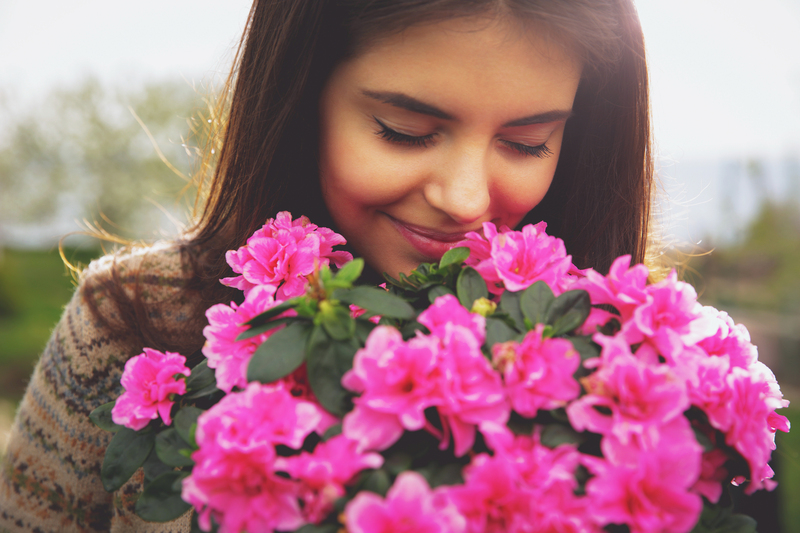Discover the Best Practices for Cut Flower Care
Posted on 13/08/2025
Discover the Best Practices for Cut Flower Care
Are you looking to maximize the beauty and lifespan of your cut flowers? Whether you've received a bouquet as a gift, picked fresh blooms from your garden, or purchased arrangements from the market, knowing how to properly care for cut flowers is essential. In this comprehensive guide, we'll show you the best practices for cut flower care so you can enjoy your floral displays for as long as possible. Learn expert tips, techniques, and hacks for keeping your bouquets lush and vibrant.

Why Cut Flower Care Matters
Cut flowers add elegance, color, and fragrance to any indoor space. However, without precise care, their splendor fades quickly due to dehydration, bacteria, and a lack of nutrients. By adopting the proper methods for caring for cut flowers, you can:
- Prolong the vase life of your flowers
- Enhance color and freshness
- Minimize wilting and shedding
- Keep water clear and odor-free
- Reduce waste and save money on replacements
The Basics: How to Prepare Fresh Cut Flowers
Preparation is key when it comes to extending the life of cut flowers. Follow these initial steps as soon as you get your flowers home:
- Unwrap Immediately: Remove all plastic sleeves, rubber bands, and packaging to let the flowers breathe.
- Choose a Clean Vase: Any residue in your vase can harbor bacteria that harm flowers. Wash your vase thoroughly with soap and water.
- Fill with Fresh Water: Use lukewarm, filtered water to hydrate the stems. Cold water can shock the flowers, while tap water may contain chemicals that shorten vase life.
- Add Flower Food: Most bouquets come with a packet of flower food. Add this to your vase according to the instructions for extra nourishment.
Trimming Your Stems Correctly
- Always Cut Before Arranging: Use sharp, clean scissors or a floral knife to make a diagonal cut about 1-2 inches from the base of the stem. This increases surface area for water absorption.
- Remove Lower Leaves: Strip any leaves or foliage that will sit below the waterline in the vase, as these can rot and breed bacteria.
- Cut Submerged Stems Underwater: Cutting stems while underwater prevents air bubbles, which can block water uptake. If possible, re-cut stems underwater before placing them in the vase.
Maintaining Your Cut Flower Arrangements
Now that your flowers are arranged, ongoing care is crucial. Consistent attention will help your cut flowers remain fresh and vibrant for longer.
Change Water Regularly
Water quality is pivotal. Dirty or stagnant water rapidly breeds bacteria, dramatically reducing the longevity of your floral arrangement. Aim to change the water every 2-3 days, rinsing the vase thoroughly each time. Top up with fresh, lukewarm water and new flower food if available.
Re-Cut Stems Periodically
Every time you change the water, re-cut the stems by 1/2 to 1 inch to improve water absorption and revive wilted flowers.
Monitor Room Conditions
- Avoid Direct Sunlight: Place your flower arrangement in a cool area, away from direct sunlight, radiators, or heating vents to prevent rapid wilting.
- Stay Clear of Fruit Bowls: Ripening fruit releases ethylene gas, which accelerates flower aging. Keep your vase away from apples, bananas, and other fruits.
- Keep Away from Draughts: Flowers exposed to constant air currents dry out quickly.
Remove Wilting Blooms and Debris
As flowers age, petals and leaves may drop into the water, promoting bacterial growth. Promptly remove any wilting flowers, brown leaves, or fallen petals from the vase.
Special Tips for Different Cut Flower Types
Different species may require unique care. Here's how to handle some common and popular cut flowers:
- Roses: Remove thorns below the waterline. Re-cut stems every 2 days and watch for cloudy water.
- Lilies: Carefully remove pollen stamens to prevent staining and pollen drop.
- Tulips: Tulips keep growing in the vase! Trim stems frequently and place in cold water.
- Hydrangeas: Submerge blooms in water if they droop, and mist petals daily to prevent dehydration.
- Sunflowers: Their thick stems benefit from extra-deep water and frequent changes.
Homemade Flower Food Recipes
If you've run out of commercial flower food, you can make your own at home. Flower food typically provides sugar (energy), acid (to optimize pH), and a biocide (to decrease bacteria).
Simple DIY Flower Food Formula
- 1 quart (liter) clean water
- 2 tablespoons lemon juice
- 1 tablespoon sugar
- 1/2 teaspoon household bleach
Stir thoroughly and add to your vase. Never add too much bleach, as it can damage the flowers.
Expert Tricks for Cut Flower Longevity
- Aspirin: Adding a crushed aspirin tablet to the water can help reduce bacterial growth.
- Pennies: The copper in pennies is a natural fungicide. Add one clean penny to your vase.
- Vodka: A splash of vodka inhibits bacterial growth and ethylene production.
- Sugar and Vinegar: A teaspoon of sugar and two teaspoons of vinegar can replace commercial flower food in a pinch.
Common Mistakes to Avoid in Fresh Cut Flower Care
Even seasoned flower enthusiasts make errors in bouquet maintenance. To optimize cut flower care:
- Avoid overcrowding stems; give each stem room to breathe
- Don't skip regular water changes
- Never use dull scissors or knives--they crush and damage stems
- Don't place arrangements on top of TVs or fridges (heat damages flowers)
- Avoid using softened water, as it contains salts that dehydrate flowers
Caring for Cut Flowers in Special Situations
Flowers in Floral Foam
Many mixed arrangements are designed in floral foam. Keep the foam moist at all times--pour water slowly to the base every other day. If possible, refresh the foam with clean water every three days.
Transporting Cut Flowers
- Keep stems hydrated in water-filled tubes or wrap the roots with moist paper towels
- Protect blooms from wind and extreme temperatures during transit
Reviving Drooping Flowers
If flowers begin to wilt prematurely, try the following rescue tips:
- Submersion: Submerge entire stem and flower head in cool water for 30-60 minutes
- Re-cut Stems: Cut at a sharper angle under water and refresh the vase water
- Misting: Lightly mist petals to restore hydration
Eco-Friendly Cut Flower Care
Practice sustainability with your bouquets:
- Compost spent flowers and leaves rather than sending them to landfill
- Reuse vases and flower foam for future arrangements
- Support local growers or pick wildflowers responsibly to minimize your carbon footprint
Summary: The Ultimate Guide to the Best Cut Flower Care Practices
The secret to enjoying gorgeous and long-lasting bouquets lies in the attention you give. By following these top-rated cut flower care tips:
- Prepare flowers correctly upon arrival
- Use a clean vase and fresh water
- Trim stems regularly and remove debris
- Keep arrangements in cool, shaded locations
- Use flower food--store-bought or homemade
- Monitor and avoid common mistakes
With just a little care and a few expert tricks, you'll maximize the lifespan and vibrance of your cut flowers. Happy arranging!

FAQs - Cut Flower Care Best Practices
How often should I change the water in my vase?
Ideally, change the vase water every 2-3 days, rinsing the vase to minimize bacteria and keeping the arrangement at its freshest.
Is it better to cut flower stems straight or at an angle?
Always cut stems at a 45-degree angle using a sharp knife or scissors to increase water absorption and prevent the ends from resting flat against the base of the vase.
Can I refrigerate cut flowers overnight?
Yes! Refrigerating flowers overnight can significantly prolong their life, especially before a big event or gathering.
How do I make homemade flower food?
Mix a quart (liter) of water with 2 Tbsp. lemon juice, 1 Tbsp. sugar, and 1/2 tsp. bleach. Stir well and add to your vase.
Should I remove leaves from the stems?
Yes, always remove any leaves that would be submerged in water to prevent bacterial growth and keep water clear.
Final Thoughts
Discovering and applying the best practices for cut flower care is a meaningful way to enjoy the full beauty and value of fresh blooms. With these expert-approved tips, you can keep your floral arrangements fresher, longer, and fill your home with natural radiance every day!
Latest Posts
Proven Orchid Care Methods for Lush Blooms
Embrace the Wisdom of Birth Flowers and What They Reflect About You
The Significance of Red Roses in Valentine's Traditions





